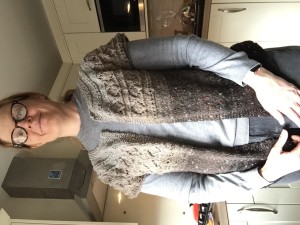“The purpose of the carding process is to align, thoroughly, all the fibres and to spread them evenly across the carders. This process is essential for the production of a woollen thread and is often employed in preparation for a semi-woollen and semi-worsted yarn.”
—Eileen Chadwick, The Craft of Handspinning
Why use handcards when you can use a drumcarder? Handcards are easily portable and great for blending colours. They are also perfect to make rolags, which are, I believe, the best preparation for longdraw woollen spinning.
I like my handcards, especially for making rolags. Yes I could use my drumcarder, but for a recent project where I wanted to achieve a gradient effect for a woollen yarn, I stuck with my handcards. Rolags seemed like the way to go for a nice woollen yarn. Carding up rolags is not particularly time consuming once you get the hang of it. You will quickly get a feel for how many rolags you need to spin a bobbin of singles.
Here’s a short video of me demonstrating how I card.
I’m not saying this is the way. It’s the way I was taught by an experienced guild member and reflects the technique Chadwick described in her book.
A couple of tips for handcarding success:
- Don’t overload your cards with fiber. Handcards aren’t designed to take big quantities. Go for 5-10 grams at a time.
- Easy does it, don’t grind your cards together.
- Don’t worry that all the fiber doesn’t transfer from one card to another. It’s not supposed to.
- If your forearms get sore, you’re doing it wrong. Stroke one card gently over the other.
- Check out Eileen Chadwick’s carding how to: pages 33-37 of The Craft of Handspinning.



Nice tutorial Rach! And I love your finished gradient project, that came out nice.
Was it easy to follow? I really wanted to show that transferring action.
I really love this gradient project too. The pattern is from Knitty (Tappan Zee) and it was a fun and quick knit.
It was easy to follow. 🙂